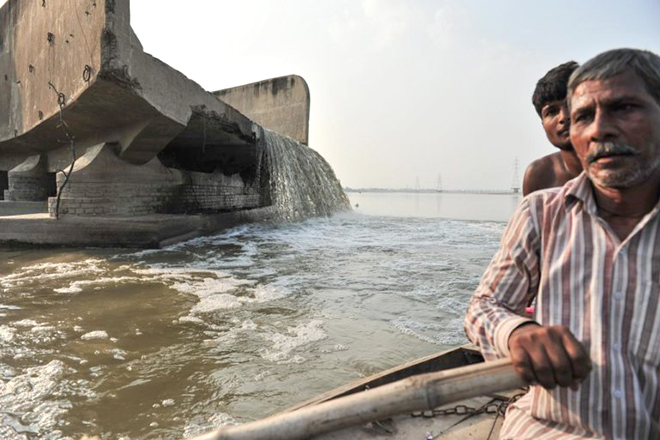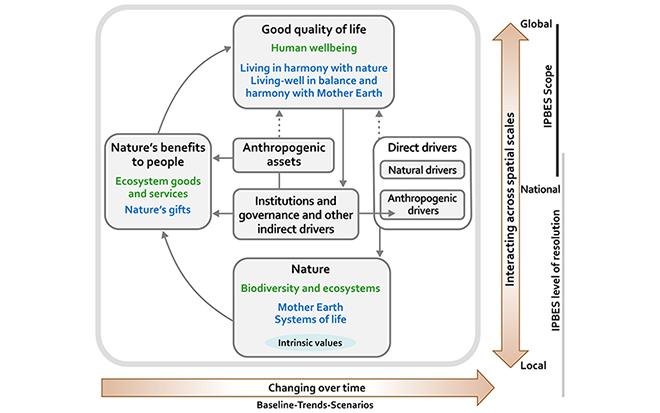NEWSLETTER
|
From India: A Case For a Greener GNP Post-Covid By Ganesan Balachander
This article appeared originally on May 18 in the environmental journal Mongabay and is reprinted with permission.
The COVID-19 pandemic has shown up major fault lines in our development trajectory and one of the issues is how we account for growth and progress with the gross national product (GNP) calculated as a single bottom line, without paying heed to the ecological, environmental and social costs. Air and water pollution have been shown to add a significant cost to India’s GNP. A greener GNP will take these costs into consideration and work to minimise them. When the COVID lockdown is over, there is a need for serious introspection on the real costs of environmental damage.
Even before the upending of the world as we knew it by COVID-19, there had been disquiet for some time over the slowing global economy in the backdrop of the trade dispute between the United States and China. India’s growth had also slowed markedly, falling below 5 percent, with calls to stimulate the economy. Now, it is anyone’s guess whether it could even drop to as low as 2 to 2.5 percent due to the pandemic.
While we are not strangers to pandemics and disease outbreaks, the emerging zoonotic viral diseases are a result of large-scale changes in the environment, habitat modification and human food consumption habits. Ebola, SARS, MERS, Chikungunya and, now, COVID-19 are the infamous five.
I argue it is an opportune time for global institutions such as the World Bank and the International Monetary Fund (IMF), as well as nation states, to initiate steps and radically revise how the hitherto measured gross national product (GNP) is calculated by incorporating principles of natural capital accounting. The current estimate of GNP is a single bottom-line assessment of the growth of the economy, without paying attention to the ecological and environmental consequences of human action.
In the early 1970s, the Club of Rome published The Limits to Growth. The message of this book still holds today. Almost two decades later, ‘Our Common Future’, the Brundtland Commission Report, recognised that fair and equitable human resource development was crucial to formulating strategies for environmental conservation.
A further step in our evolving thinking and ethos is the global compact to achieve Sustainable Development Goals by 2030. The need for accounting “extended wealth”, including the natural, human and social capital, becomes more prominent than ever before.
In the meantime, we are facing the consequences of global warming with pronounced droughts, extreme rainfall events and severe flooding as witnessed in recent years, further exacerbated through poor planning, wetland destruction and infrastructure development. The record-breaking temperatures this Australian summer and huge loss of lives in the massive bush fires are being attributed to human-induced global warming. No wonder scholars are rechristening the erstwhile-designated Holocene epoch as the Anthropocene, and the different planetary boundaries, which outline the safe operating space for humanity, continue to shrink and collapse.
What has all this to do with the way GNP is measured?
The Human Development Report first developed by Mahbub ul Haq notes that among its shortcomings, environmental degradation, pollution and resource depletion are not costed or accounted for and have very severe consequences for people especially living at the margins.
The Gross National Happiness measure promoted by the previous King of Bhutan and the Gross National Well Being budget in New Zealand hold promise for a sustainable development trajectory for the rest of the world.
A journey of a thousand miles begins with a single step, so goes a Chinese saying. It will likewise take significant and sustained effort to make a complete shift to a sustainable future. One such has been The Economics of Ecosystems and Biodiversity (TEEB), a global initiative focused on “making nature’s values visible” at all levels of decision-making.
In the absence of developed markets to measure the environmental consequences of economic growth, Joseph Stiglitz’ proposal for a green GDP is still a work in progress. Some environmental experts prefer physical indicators (such as “waste per capita” or “carbon dioxide emissions per year”), which may be aggregated to indices such as the Sustainable Development Index. As this thinking will take some time to be mainstreamed, I suggest a more simplified version.
There is a good deal of literature now showing the correlation of human mortality and morbidity and associated health-care costs, and loss of economic production with air and water pollution. For example, the stubble burning in some of the North Indian states in winter has a significant negative social and economic impact. Likewise, one can cite the burning of parts of the Amazon to grow soya for the global market and for cattle ranches, and clearing the tropical forests of Kalimantan for oil palm plantations.
A World Bank study released in 2016 revealed that India lost more than 8.5 percent of its GDP in 2013 due to the cost of increased welfare and lost labor because of air pollution. At its then size of $2.6 trillion, the loss equalled about $221 billion. Similarly, the health and associated economic costs of water pollution on the GNP should be calculated, and is likely to be even more.
This will be a revelation to policy makers and investors and it can empower civil society to push for a development trajectory that is much more sustainable, emphasizing collective wellbeing over that of the individual.
When COVID-19 is no longer the only news of the day and the masks come off, society ought to seriously consider the modern chemical-based farming systems; habitat destruction in the name of development; encroachment into what is still left of wilderness; and the drivers of climate change. The high costs to human health and economy of all this have to be measured.
Communities and civil society the world over recognize the myriad ways nature provides for wellbeing and have huge stakes in the sustainability and integrity of the web of life. However, governments, when faced with competing and short-term interests, often make trade-offs in their development policies, where the intangible, invisible and longer-term values of nature get short shrift. The warning signs are loud and clear that it cannot continue to be business as usual.
The Government would do well to set up a national task force to make GNP calculations that more accurately reflect the real costs and benefits. This can have a number of salutary outcomes: in particular, help countries make profound and radical changes to the way we measure “progress” that is economically sound, socially equitable and environmentally sustainable.
It will also strengthen civil society engagement and voice in determining the development trajectory and holding policy makers accountable, leading to improved local governance. For example, engaging school and college students, as well as seniors, can build a vibrant knowledge-based society in “citizen science” efforts to assess the state of the environment in which we live, especially air, water, wetlands and biodiversity.
Ganesan Balachander was regional director for South Asia of the Ford Foundation from 2003 to 2009, is a founding Consortium Board member of the Consultative Group for International Agricultural Research (CGIAR) and is a former executive director of the Ashoka Trust for Research in Ecology and the Environment (ATREE).
|



